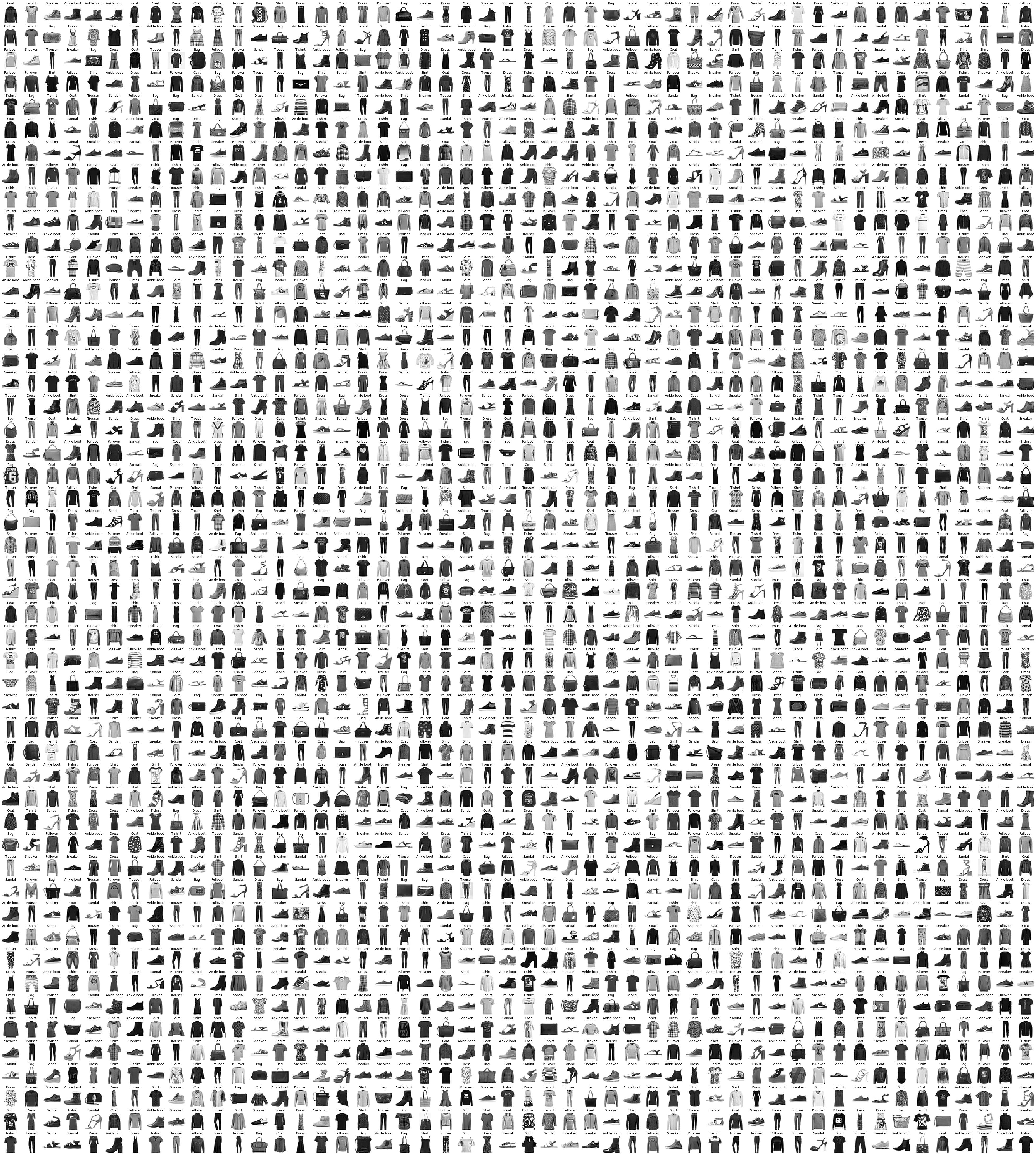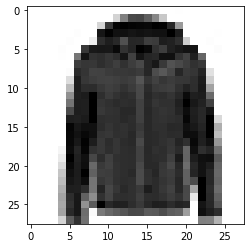keras之分类模型

零.导入所需库
import matplotlib as mpl
import matplotlib.pyplot as plt
%matplotlib inline
import numpy as np
import sklearn
import pandas as pd
import os
import sys
import time
import tensorflow as tf
from tensorflow import keras
print(tf.__version__)
print(sys.version_info)
for module in mpl, np, pd, sklearn, tf, keras:
print(module.__name__, module.__version__)2.0.0-alpha0
sys.version_info(major=3, minor=6, micro=13, releaselevel='final', serial=0)
matplotlib 3.3.4
numpy 1.16.2
pandas 1.1.5
sklearn 0.24.1
tensorflow 2.0.0-alpha0
tensorflow.python.keras.api._v2.keras 2.2.4-tf
一.加载数据集,切分训练集,测试集和验证集,
fashion_mnist = keras.datasets.fashion_mnist
(x_train_all, y_train_all), (x_test, y_test) = fashion_mnist.load_data()
x_valid, x_train = x_train_all[:5000], x_train_all[5000:]
y_valid, y_train = y_train_all[:5000], y_train_all[5000:]
# 查看维度
print(x_valid.shape, y_valid.shape)
print(x_train.shape, y_train.shape)
print(x_test.shape, y_test.shape)
# 第二种方案,建议采用
# import gzip
# # 定义加载数据的函数,data_folder为保存gz数据的文件夹,该文件夹下有4个文件
# # 'train-labels-idx1-ubyte.gz', 'train-images-idx3-ubyte.gz',
# # 't10k-labels-idx1-ubyte.gz', 't10k-images-idx3-ubyte.gz'
# def load_data(data_folder):
# files = [
# 'train-labels-idx1-ubyte.gz', 'train-images-idx3-ubyte.gz',
# 't10k-labels-idx1-ubyte.gz', 't10k-images-idx3-ubyte.gz'
# ]
# paths = []
# for fname in files:
# paths.append(os.path.join(data_folder,fname))
# with gzip.open(paths[0], 'rb') as lbpath:
# y_train = np.frombuffer(lbpath.read(), np.uint8, offset=8)
# with gzip.open(paths[1], 'rb') as imgpath:
# x_train = np.frombuffer(
# imgpath.read(), np.uint8, offset=16).reshape(len(y_train), 28, 28)
# with gzip.open(paths[2], 'rb') as lbpath:
# y_test = np.frombuffer(lbpath.read(), np.uint8, offset=8)
# with gzip.open(paths[3], 'rb') as imgpath:
# x_test = np.frombuffer(
# imgpath.read(), np.uint8, offset=16).reshape(len(y_test), 28, 28)
# return (x_train, y_train), (x_test, y_test)
# (x_train_all, y_train_all), (x_test, y_test) = load_data('../keras/fashion/')
# x_valid, x_train = x_train_all[:5000], x_train_all[5000:]
# y_valid, y_train = y_train_all[:5000], y_train_all[5000:]
# print(x_valid.shape, x_train.shape, y_valid.shape, y_train.shape)(5000, 28, 28) (5000,)
(55000, 28, 28) (55000,)
(10000, 28, 28) (10000,)
# 看效果图
def show_single_image(img_arr):
plt.imshow(img_arr, cmap="binary")
plt.show()
show_single_image(x_train[0]) 
组成大图看下效果
def show_imgs(n_rows, n_cols, x_data, y_data, class_names):
assert len(x_data) == len(y_data)
assert n_rows * n_cols < len(x_data)
plt.figure(figsize = (n_cols * 1.4, n_rows * 1.6))
for row in range(n_rows):
for col in range(n_cols):
index = n_cols * row + col
plt.subplot(n_rows, n_cols, index+1)
plt.imshow(x_data[index], cmap="binary",
interpolation = 'nearest')
plt.axis('off')
plt.title(class_names[y_data[index]])
plt.show()
class_names = ['T-shirt', 'Trouser', 'Pullover', 'Dress',
'Coat', 'Sandal', 'Shirt', 'Sneaker',
'Bag', 'Ankle boot']
show_imgs(50, 50, x_train, y_train, class_names) 
print(x_train.shape)(55000, 28, 28)
二.构建模型
# tf.keras.models.Sequential()
# 第一种方式
"""
model = keras.models.Sequential()
model.add(keras.layers.Flatten(input_shape=[28, 28]))
model.add(keras.layers.Dense(300, activation="relu"))
model.add(keras.layers.Dense(100, activation="relu"))
model.add(keras.layers.Dense(10, activation="softmax"))
"""
# 第二种方式
model = keras.models.Sequential([
keras.layers.Flatten(input_shape=[28, 28]),
keras.layers.Dense(300, activation='relu'),
keras.layers.Dense(100, activation='relu'),
keras.layers.Dense(10, activation='softmax')
])
model.summary()Model: "sequential"
_________________________________________________________________
Layer (type) Output Shape Param #
=================================================================
flatten (Flatten) (None, 784) 0
_________________________________________________________________
dense (Dense) (None, 300) 235500
_________________________________________________________________
dense_1 (Dense) (None, 100) 30100
_________________________________________________________________
dense_2 (Dense) (None, 10) 1010
=================================================================
Total params: 266,610
Trainable params: 266,610
Non-trainable params: 0
_________________________________________________________________
# relu: y = max(0, x)
# softmax: 将向量变成概率分布. x = [x1, x2, x3],
# y = [e^x1/sum, e^x2/sum, e^x3/sum], sum = e^x1 + e^x2 + e^x3
# reason for sparse: y->index. y->one_hot->[]
model.compile(loss="sparse_categorical_crossentropy",
optimizer = "sgd",
metrics = ["accuracy"])model.layers[,
,
,
]
model.summary()Model: "sequential"
_________________________________________________________________
Layer (type) Output Shape Param #
=================================================================
flatten (Flatten) (None, 784) 0
_________________________________________________________________
dense (Dense) (None, 300) 235500
_________________________________________________________________
dense_1 (Dense) (None, 100) 30100
_________________________________________________________________
dense_2 (Dense) (None, 10) 1010
=================================================================
Total params: 266,610
Trainable params: 266,610
Non-trainable params: 0
_________________________________________________________________
三.训练并保存模型
# [None, 784] * W + b -> [None, 300] W.shape [784, 300], b = [300]history = model.fit(x_train, y_train, epochs=10,
validation_data=(x_valid, y_valid))
save_model_name = './modelckpt/model.h5'
if not os.path.exists('modelckpt/'):
os.mkdir('modelckpt/')
model.save(save_model_name)Train on 55000 samples, validate on 5000 samples
Epoch 1/10
55000/55000 [==============================] - 3s 51us/sample - loss: 0.3054 - accuracy: 0.8848 - val_loss: 0.4510 - val_accuracy: 0.8548
Epoch 2/10
55000/55000 [==============================] - 3s 51us/sample - loss: 0.3016 - accuracy: 0.8869 - val_loss: 0.4398 - val_accuracy: 0.8610
Epoch 3/10
55000/55000 [==============================] - 3s 52us/sample - loss: 0.2980 - accuracy: 0.8877 - val_loss: 0.4571 - val_accuracy: 0.8568
Epoch 4/10
55000/55000 [==============================] - 3s 52us/sample - loss: 0.2938 - accuracy: 0.8902 - val_loss: 0.4521 - val_accuracy: 0.8582
Epoch 5/10
55000/55000 [==============================] - 3s 52us/sample - loss: 0.2913 - accuracy: 0.8909 - val_loss: 0.4274 - val_accuracy: 0.8624
Epoch 6/10
55000/55000 [==============================] - 3s 50us/sample - loss: 0.2898 - accuracy: 0.8914 - val_loss: 0.4413 - val_accuracy: 0.8588
Epoch 7/10
55000/55000 [==============================] - 3s 51us/sample - loss: 0.2853 - accuracy: 0.8920 - val_loss: 0.4350 - val_accuracy: 0.8636
Epoch 8/10
55000/55000 [==============================] - 3s 51us/sample - loss: 0.2821 - accuracy: 0.8936 - val_loss: 0.4405 - val_accuracy: 0.8596
Epoch 9/10
55000/55000 [==============================] - 3s 58us/sample - loss: 0.2805 - accuracy: 0.8932 - val_loss: 0.4581 - val_accuracy: 0.8474
Epoch 10/10
55000/55000 [==============================] - 3s 62us/sample - loss: 0.2784 - accuracy: 0.8958 - val_loss: 0.4382 - val_accuracy: 0.8652
type(history)tensorflow.python.keras.callbacks.History
history.history{'loss': [0.305442014449293,
0.3016150927500291,
0.29796552203135057,
0.29384967036897486,
0.2912601308887655,
0.28980197758457876,
0.28531043367385867,
0.2821029525247487,
0.2804998582287268,
0.27841436649452556],
'accuracy': [0.8848182,
0.8868727,
0.88765454,
0.8902364,
0.89092726,
0.8913818,
0.89198184,
0.8936,
0.89323634,
0.89576364],
'val_loss': [0.4510028466701508,
0.43975458673238754,
0.4571208846330643,
0.4521390220403671,
0.4273876326799393,
0.4413052448749542,
0.43496818118691444,
0.44045424642562864,
0.4580733994960785,
0.43815696096420287],
'val_accuracy': [0.8548,
0.861,
0.8568,
0.8582,
0.8624,
0.8588,
0.8636,
0.8596,
0.8474,
0.8652]}
四.看下训练分布,验证分布
def plot_learning_curves(history):
pd.DataFrame(history.history).plot(figsize=(8, 5))
plt.grid(True)
plt.gca().set_ylim(0, 1)
plt.show()
plot_learning_curves(history) 
# model.evaluate
# 输入数据和标签,输出损失和精确度.
# # 评估模型,不输出预测结果
# loss,accuracy = model.evaluate(X_test,Y_test)
# print('\ntest loss',loss)
# print('accuracy',accuracy)
# model.predict
# 输入测试数据,输出预测结果
# (通常用在需要得到预测结果的时候)
# 模型预测,输入测试集,输出预测结果
# y_pred = model.predict(X_test,batch_size = 1)test_loss, test_acc = model.evaluate(x_test, y_test)
print("准确率: %.4f,共测试了%d张图片 " % (test_acc, len(x_test)))10000/10000 [==============================] - 0s 31us/sample - loss: 0.4674 - accuracy: 0.8567
准确率: 0.8567,共测试了10000张图片
准确率85.67%
本文于 2021-04-28 14:35 由作者进行过修改